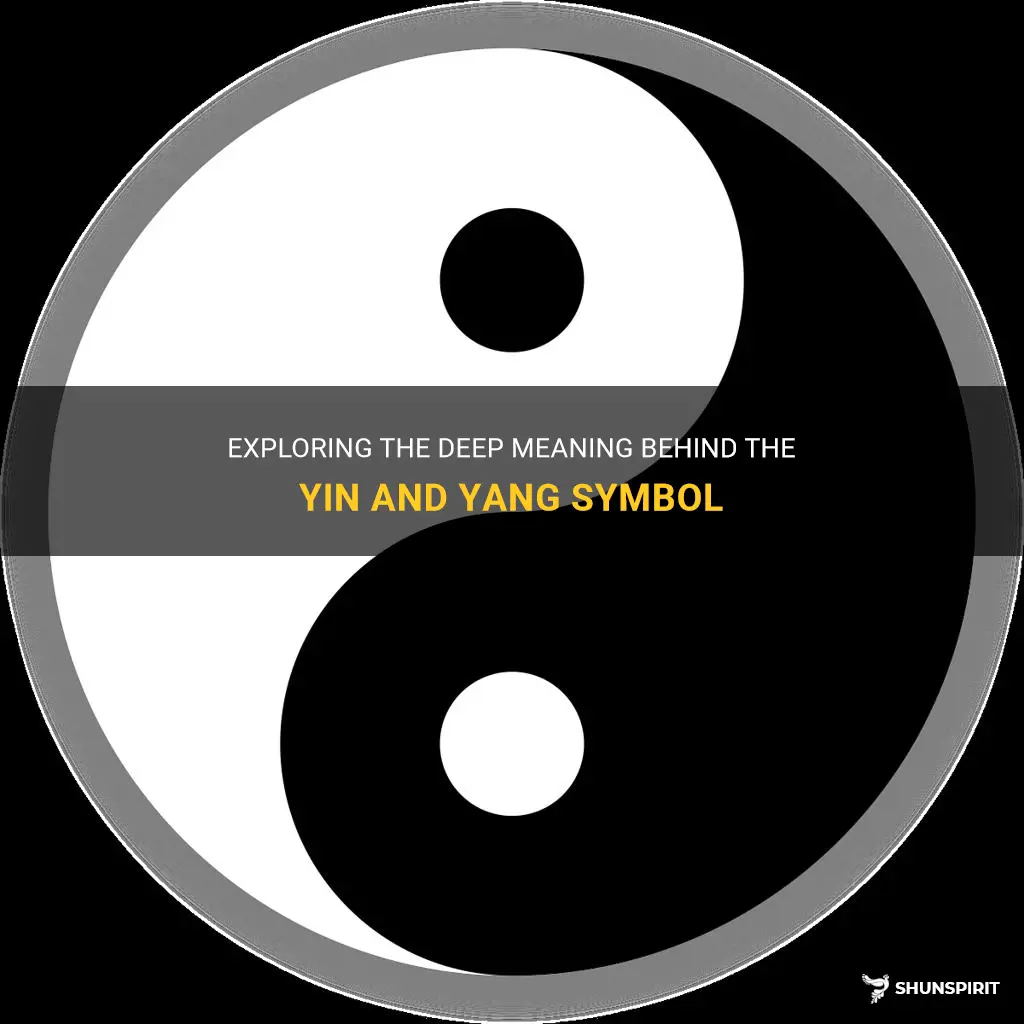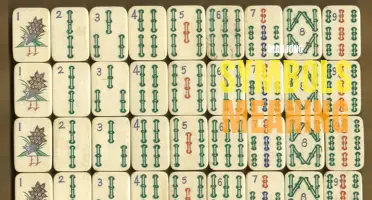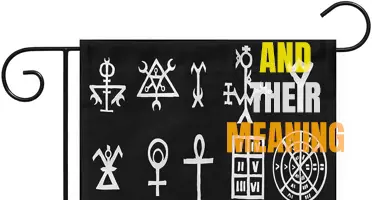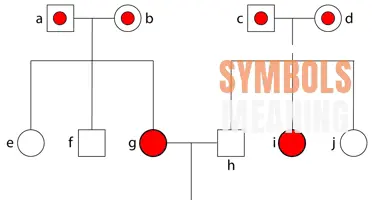
The yin and yang symbol, often referred to as the Taijitu, is not just a visually captivating symmetry of black and white, but a profound representation of ancient Chinese philosophy. Dating back thousands of years, this symbol encapsulates the concept of balance in all aspects of existence, highlighting the interplay of opposites and the harmony that can be found within. Whether it's day and night, male and female, or even good and evil, the yin and yang symbol serves as a timeless reminder of the dynamic and interconnected nature of our world.
What You'll Learn
- What is the significance of the yin and yang symbol in Chinese philosophy?
- How does the yin and yang symbol represent the balance of complementary forces?
- Are there specific meanings or associations attached to the yin and yang symbol in different cultures?
- Can the yin and yang symbol be interpreted differently depending on the context?
- How has the understanding of the yin and yang symbol evolved over time?

What is the significance of the yin and yang symbol in Chinese philosophy?
The yin and yang symbol is one of the most recognizable symbols in Chinese philosophy and culture. It represents the inherent duality and harmony of the universe and is used to understand opposing forces and the interconnectedness of all things.
The yin and yang symbol consists of a circle divided into two equal halves, one black and one white. Each half contains a small dot of the opposite color, symbolizing the inherent presence of the other within each aspect. The black half is called yin, and the white half is called yang. Yin represents darkness, femininity, passivity, and the moon. Yang represents light, masculinity, activity, and the sun. Together, they symbolize the balance and interplay of these opposite forces.
In Chinese philosophy, the concept of yin and yang is present in various aspects of life. It is used to understand and explain the relationships between opposite forces such as good and evil, hot and cold, light and dark, and so on. The symbol emphasizes the importance of balance and harmony in all aspects of life.
According to Chinese philosophy, everything in the universe is made up of these two opposing forces, and they are in constant motion and transformation. The understanding of yin and yang helps individuals navigate through life and make decisions that promote balance and wellbeing.
For example, in traditional Chinese medicine, yin and yang are used to understand the balance of energy in the body. Health is believed to be a result of the harmonious balance between yin and yang. Imbalances in these forces can lead to physical and emotional ailments. Practitioners of traditional Chinese medicine use various techniques such as acupuncture and herbal remedies to restore the balance of yin and yang in the body.
In addition to health, the concept of yin and yang is also applied to various other aspects of Chinese culture. It is used to understand the relationships between family members, the balance between work and rest, and even in the design of architectural structures.
Overall, the yin and yang symbol holds significant importance in Chinese philosophy as it represents the fundamental principles of balance and harmony in the universe. It is a reminder of the interconnectedness of all things and the need to strive for balance in all aspects of life. Whether it is in health, relationships, or personal choices, understanding and embracing the concept of yin and yang can lead to a more balanced and fulfilling life.
A Guide to Yogic Symbols and Their Powerful Meanings
You may want to see also

How does the yin and yang symbol represent the balance of complementary forces?
The yin and yang symbol is one of the most well-known and widely recognized symbols in the world. Originating from ancient Chinese philosophy, it represents the balance of complementary forces in the universe. The symbol consists of a black yin and white yang, intertwined in a circular shape. Each side contains a dot of the opposite color, representing the potential for change and the presence of both forces within each other.
Yin and yang are two fundamental principles that permeate all aspects of existence. The concept of yin and yang is based on the philosophy that the universe is comprised of opposing forces. Yin represents the feminine, receptive, and passive aspects, while yang represents the masculine, active, and assertive aspects. Together, they form a harmonious balance that creates wholeness and completeness.
In the yin and yang symbol, the swirling shape signifies the constant and cyclical interplay between the two forces. The contrasting colors and the dots within each side indicate that there is a little yin in yang and a little yang in yin, emphasizing their interconnectedness and interdependence. Just as day and night, light and dark, and hot and cold are interconnected and depend on each other, yin and yang are inseparable and mutually reinforcing.
The balance of yin and yang is not static but rather dynamic and constantly changing. This concept is represented by the curved line that separates the black and white halves of the symbol. This line symbolizes the ever-shifting nature of life and the need for adaptation and flexibility. Just like the cycle of seasons, the energy of yin and yang ebbs and flows, with one force rising as the other recedes.
The yin and yang symbol also reflects the idea that within every aspect of life, there is a seed of its opposite. For example, within darkness, there is the potential for light, and within chaos, there is the potential for order. This concept emphasizes the need for harmony and balance in order to maintain a stable and harmonious existence.
In Chinese philosophy and traditional medicine, the yin and yang concept is applied to explain various phenomena. It is believed that imbalances between yin and yang can lead to illness and disharmony in the body and mind. Therefore, practitioners seek to restore balance by utilizing methods such as acupuncture, herbal medicine, and qigong.
The yin and yang symbol is not only a representation of a philosophical concept but also serves as a reminder of the interconnectedness of all things and the necessity of finding balance in our lives. It encourages us to embrace the duality of existence and recognize that opposing forces are not separate entities but rather interdependent aspects of a whole. By understanding and incorporating the principles of yin and yang into our lives, we can strive for harmony, balance, and wholeness.
The Symbolic Meaning and Cultural Significance of the Praying Mantis
You may want to see also

Are there specific meanings or associations attached to the yin and yang symbol in different cultures?
The yin and yang symbol, also known as the Taijitu, is a well-known and widely recognized symbol in various cultures. It originated in ancient China and has since spread to many other parts of the world. The symbol represents the concept of balance and harmony between opposing forces, and it is often associated with Taoism and the concept of yin and yang.
In Chinese culture, the yin and yang symbol is deeply ingrained and has a rich history. The concept of yin and yang is based on the belief that everything in the universe is made up of two opposing principles: yin, which represents darkness, femininity, and passivity, and yang, which represents light, masculinity, and activity. These two principles are complementary and interconnected, and they constantly interact and transform into one another.
In Chinese philosophy, the yin and yang symbol represents the harmony and balance between these opposing forces. The symbol itself consists of a circle divided into two halves: one half is black, representing yin, and the other half is white, representing yang. Within each half, there is a small dot of the opposite color, symbolizing the seed of the opposite principle within each force.
The yin and yang symbol is often associated with Taoism, a Chinese philosophy and religion that emphasizes living in harmony with the Tao, which is the natural order of the universe. Taoism teaches that by embracing both yin and yang and finding a balance between them, one can achieve harmony and inner peace.
Outside of China, the yin and yang symbol has also become popular and has taken on various meanings and associations in different cultures. In the West, it is often seen as a symbol of balance and harmony between opposing forces or energies. It is commonly used in various forms of art, such as tattoos and jewelry, as a representation of the interconnectedness of all things.
In some Eastern cultures, such as Japan and Korea, the yin and yang symbol is also recognized and has similar associations with balance and harmony. However, it may be used in different contexts or have additional meanings specific to those cultures.
In conclusion, the yin and yang symbol has specific meanings and associations in different cultures. In Chinese culture, it represents the harmony and balance between yin and yang, while in the West, it is often seen as a symbol of balance and interconnectedness. Regardless of the specific interpretations, the yin and yang symbol continues to captivate and inspire people from various cultures around the world.
Exploring the Symbolic Meaning of Yellow: A Color of Sunshine, Happiness, and Intelligence
You may want to see also

Can the yin and yang symbol be interpreted differently depending on the context?
The yin and yang symbol is a timeless and universal representation of balance and harmony. Originating from ancient Chinese philosophy, this symbol embodies the idea that opposite forces are interconnected and interdependent. While it is generally understood as a symbol of duality, the interpretation of yin and yang can vary depending on the context in which it is used.
At its core, the yin and yang symbol represents the complementary nature of opposites. Yin represents the feminine, passive, dark, and cold aspects, while yang represents the masculine, active, light, and hot aspects. The symbol illustrates how these opposing forces are interrelated and interdependent. It depicts a continuous and dynamic interaction between the two, emphasizing the importance of balance and harmony in all aspects of life.
In a broader context, the yin and yang symbol can also represent the broader concepts of interconnectedness and unity. It highlights the interdependency of all things in the universe, acknowledging that every action or event has a consequence or effect on the whole. In this interpretation, the symbol serves as a reminder to seek harmony and balance not only within ourselves but also in our relationships with others and with nature.
Additionally, the yin and yang symbol can be applied to various aspects of life, such as health, spirituality, and personal growth. In Traditional Chinese Medicine, the balance of yin and yang is seen as essential for maintaining physical and mental well-being. It is believed that an imbalance in these forces can lead to illness and disharmony. By understanding and harmonizing the yin and yang energies within ourselves, we can strive for optimal health and vitality.
In the realm of spirituality, the yin and yang symbol can represent the journey towards self-realization and enlightenment. It symbolizes the integration of our dualistic nature and the transcendence of opposites. By embracing and reconciling our own inner contradictions and conflicts, we can achieve a state of inner harmony and peace.
Similarly, in the context of personal growth, the yin and yang symbol can serve as a guide for self-improvement and self-acceptance. It encourages us to acknowledge and integrate our strengths and weaknesses, our light and shadow aspects. By doing so, we can cultivate a sense of wholeness and balance, allowing us to navigate life's challenges with greater ease and resilience.
Overall, the interpretation of the yin and yang symbol can vary depending on the context. While it is commonly understood as representing the interplay of opposites, it can also symbolize interconnectedness, unity, and personal growth. Its versatility and universal appeal have made it a timeless symbol that continues to inspire and guide individuals on their journey towards balance and harmony.
Understanding Symbolic Interactionism: The Meaning behind Social Interactions
You may want to see also

How has the understanding of the yin and yang symbol evolved over time?
The yin and yang symbol is a well-known symbol that represents dualities and balance in Chinese philosophy. It is often depicted as a circle containing two swirling halves - one black and one white - each with a dot of the opposite color within it. This symbol has its roots in ancient Chinese culture and has evolved over time to encompass a broader understanding of balance and harmony.
The origins of the yin and yang symbol can be traced back to the ancient philosophy of Taoism. Taoism emphasizes the importance of living in harmony with the natural world and seeks to find balance between opposing forces. In Taoist philosophy, the yin and yang represent complementary qualities that exist in everything. Yin is associated with qualities such as darkness, femininity, softness, and passivity, while yang is associated with lightness, masculinity, hardness, and activity. The dot within each half of the symbol represents the seed of the opposite quality, indicating that there is always the potential for change and transformation.
Over time, the understanding of the yin and yang symbol has expanded beyond its Taoist origins. The symbol has become more widely recognized and has been adopted by various cultures and belief systems. It has been used in fields such as psychology, astrology, and even popular culture.
In psychology, the yin and yang symbol has been used to represent the integration of opposing forces within the human psyche. In this context, yin and yang are seen as representing the unconscious and conscious aspects of the mind. The symbol is often used to illustrate the need for balance and integration between these two aspects in order to achieve psychological well-being.
In astrology, the yin and yang symbol has been used to represent the opposing energies of the zodiac signs. The zodiac signs are divided into groups of yin and yang signs, with yin signs being associated with introversion and receptivity, and yang signs being associated with extroversion and assertiveness. The symbol is used to illustrate the interplay between these different energies in astrology.
In popular culture, the yin and yang symbol has been widely used and recognized. It has been incorporated into various designs and logos, often representing a sense of balance and harmony. It has become a popular symbol in fashion, art, and tattoos, and is often seen as a representation of unity and wholeness.
While the basic understanding of the yin and yang symbol has remained consistent over time - representing the balance of opposing forces - its application and interpretation have expanded. Today, the symbol is widely recognized and used in various contexts, serving as a reminder of the importance of balance and harmony in all aspects of life.
What Does the 30 Symbol Mean and Where Can You Find It?
You may want to see also
Frequently asked questions
The yin and yang symbol represents the concept of dualism and balance in Chinese philosophy. It consists of an outer circle, which represents wholeness and unity, and two interlocking teardrop-shaped halves, one black and one white. The black half represents yin, which is associated with darkness, femininity, passivity, and the earth. The white half represents yang, which is associated with light, masculinity, activity, and the heavens. The symbol illustrates how these opposing forces are interconnected and interdependent, constantly evolving and transforming into each other.
The yin and yang symbol embodies the idea that all things in the universe are interconnected and in a constant state of change. It represents the balance and harmony between opposing forces and the recognition that these forces are necessary for the existence of one another. It symbolizes the duality and interdependence of various aspects of life, such as light and darkness, hot and cold, good and evil, and active and passive. The concept of yin and yang encourages individuals to seek balance and harmony in their lives and to understand that both positive and negative forces are essential for personal growth and well-being.
In traditional Chinese medicine, the yin and yang symbol is used to represent the balance and harmony of the body's energy, or Qi. It is believed that when yin and yang are in balance, a person's health and well-being are maintained. Imbalances in yin and yang can lead to illness and disease. Traditional Chinese medicine seeks to restore this balance through various techniques, such as acupuncture, herbal medicine, and qigong. The yin and yang symbol serves as a reminder of the importance of maintaining a harmonious flow of energy in the body.
Yes, the yin and yang symbol can be applied to various aspects of life beyond philosophy and traditional Chinese medicine. It can be seen in the balance between work and rest, day and night, and activity and relaxation. It can also be applied to relationships, where individuals with complementary qualities and strengths create a harmonious and balanced partnership. The yin and yang symbol reminds us to seek balance and integration in all areas of life, recognizing the value and interdependence of seemingly opposing forces.







